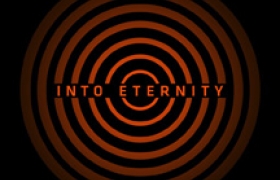Writer
Never before has the phrase “curiosity killed the cat” applied more to the human race than in its quest to discover powerful sources of energy to sustain the human race. It is an essential part of human nature to explore and investigate, which has led to a myriad of energy-related discoveries, one of them being nuclear power.
This discovery has better enabled us to satisfy our seemingly infinite demand for energy, but it comes with a serious bi-product: nuclear waste. In the documentary “Into Eternity,” filmmaker Michael Madsen attempts to quench his own nuclear curiosity by illustrating Finland’s way of managing nuclear waste with long-term management in mind. His film raises pertinent questions, asking mainly what it means to have this method as the only lasting monument of our existence 100,000 years from now.
Finland’s approach to dealing with the toxic substance is to construct an underground containment center, designed to withstand 100,000 years (which is the estimated half life of nuclear waste) without human interaction. Dubbed “Onkalo,” meaning “hiding place” in Finnish, this facility is to be sealed and never to be reopened again so that no harm can come to anyone or anything that might exist long after us. However, 100,000 years is far beyond our comprehension or imagination, and there is a strong possibility that those in the distant future will not know Onkalo’s purpose. More importantly, they might not grasp how imperative it is to not go near the dangerous underground toxic cavern.
It is important to note that this film was not meant to be an environmental documentary, or to resemble a journalistic project, where the story line is completely based on the revealing of highly confidential information. Rather, Madsen saw this film more along the lines of a science-fiction genre placed in a real, contemporary time; where the camera acts as a visitor looking at our present time from a place of isolation.
“[The camera is meant to be] outside of time and space,” said Madsen.
This haunting effect is achieved through various cinematic elements, such as an emphasis on sound. This is seen in the loud and rhythmic pounding that imitates the drilling that takes place in Onkalo, the howling wind found outside Onkalo in the nearby forest and the classical and opera music that is played during interviews with the scientists and experts in this field of nuclear study. Along with the dramatization of sound, the documentary’s pacing and bright lighting provide the viewer with a sort of outer-world experience. All of these combined elements create a distinctly eerie but riveting mood that provides an additional dimension to this already thought-provoking film.
“Basically the film is about things that happen far into the future,” Madsen said.
Yet the film could arguably be seen as far more than scenarios of the future. The film’s main subject matter is so broad and multifaceted that a multitude of themes can be derived from a single viewing. However, no matter how many interpretations are made, this issue of nuclear waste is present in the film. Interestingly enough, Onkalo’s future and the fate of its future inhabitants are in jeopardy, not because of the potential for technical error, but because of human curiosity.
Catastrophe and certain failure could occur, should somebody muster enough curiosity and courage to open or stumble upon Onkalo. Just as human inquisitiveness perhaps created the issue of nuclear waste, so could that same desire to know be the undoing of future generations.


















Comments are closed.